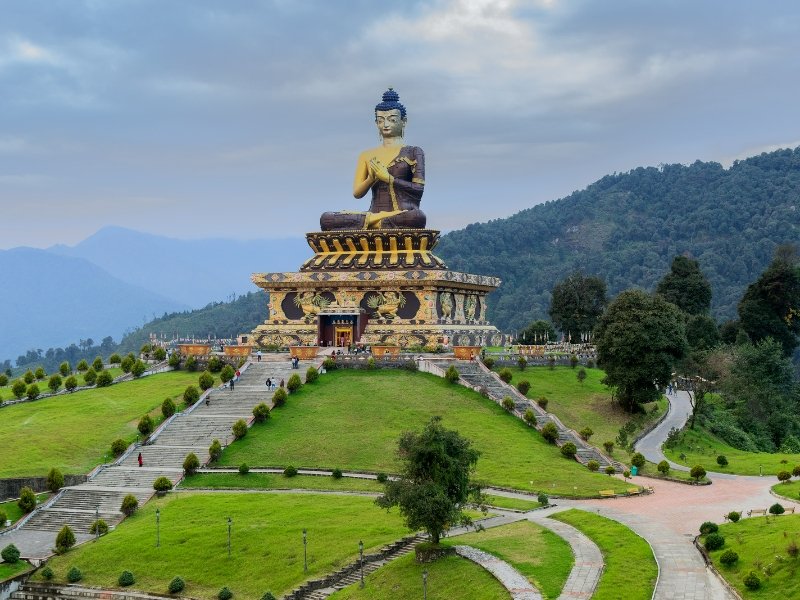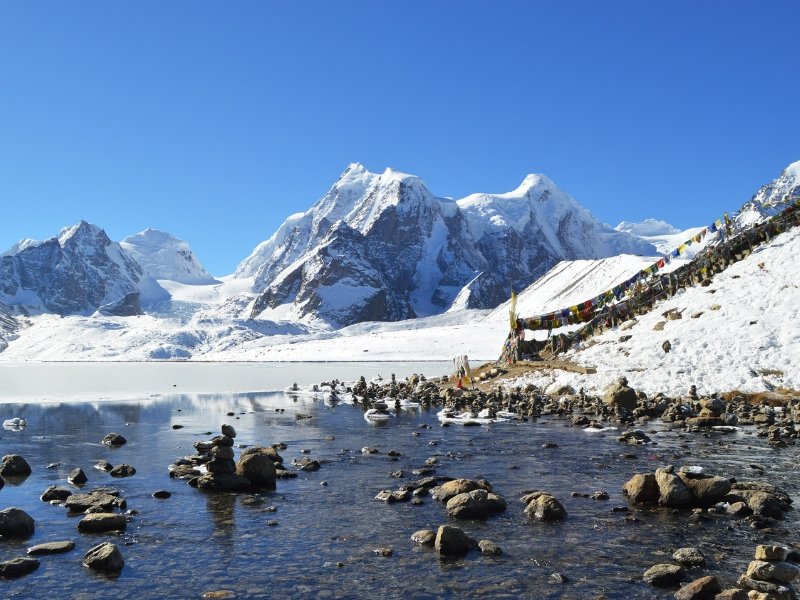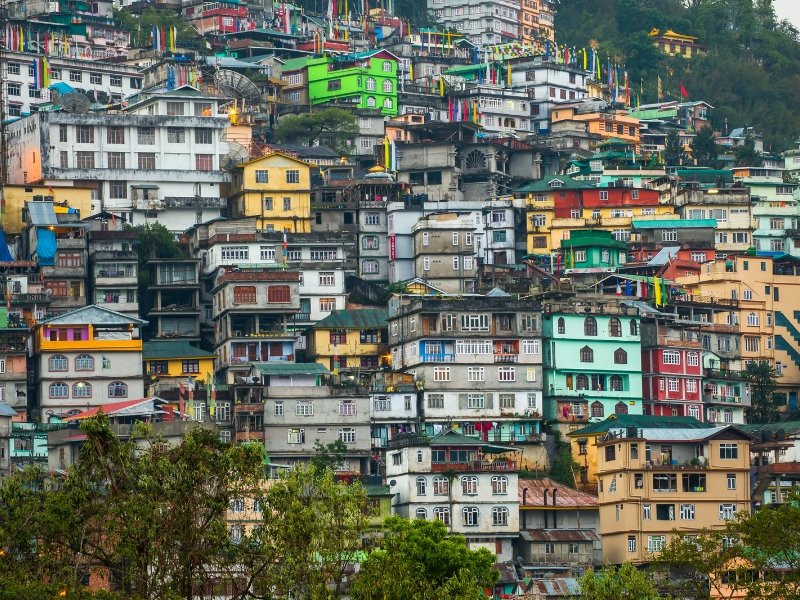Sikkim
Overview
Sikkim is a state in northeastern India, located in the eastern Himalayas. It is the least populous and second smallest state in India, both in terms of area and population. Here are some key facts about Sikkim:
Sikkim is situated in the northeastern part of India and shares its borders with Tibet (China) to the north, Bhutan to the east, Nepal to the west, and the Indian state of West Bengal to the south.
The capital and largest city of Sikkim is Gangtok.
Sikkim is known for its stunning mountainous terrain, with the Himalayas dominating its landscape. Kanchenjunga, the third-highest peak in the world, lies on the border between Sikkim and Nepal. The state is also home to numerous glaciers, alpine meadows, and dense forests.
Nepali is the official language of Sikkim, and English is also widely spoken and understood. Other languages spoken by various communities in the state include Bhutia, Lepcha, and Limbu.
Sikkim is known for its rich and diverse culture, influenced by Tibetan, Bhutanese, and Nepalese traditions. The state celebrates various festivals, including Dashain, Tihar, Losar, and Kagyed Dance.
Sikkim is a popular tourist destination known for its natural beauty and adventure opportunities. Tourists visit Sikkim to explore its monasteries, trek in the Himalayas, and enjoy the serene environment. Some popular tourist destinations in Sikkim include Tsomgo Lake, Yuksom, Pelling, and the Rumtek Monastery.
Sikkim is known for its rich biodiversity. It is home to various species of flora and fauna, including several endangered species like the red panda and snow leopard. The state government has taken steps to preserve its natural heritage through the establishment of national parks and wildlife sanctuaries.
Sikkim became the 22nd state of India on May 16, 1975. It follows a democratic system of government with a Governor appointed by the President of India and a Chief Minister as the head of the state government.
Agriculture is the primary occupation of the people of Sikkim, with the cultivation of crops like cardamom, oranges, apples, and tea. Tourism also plays a significant role in the state's economy. Sikkim is known for its organic farming practices and was declared India's first fully organic state in 2016.
Sikkim is connected to the rest of India through road networks, with the nearest major railway station and airport located in the neighboring state of West Bengal.
Sikkim's unique culture, breathtaking landscapes, and focus on sustainable development make it a distinctive and captivating part of India. It attracts tourists and nature enthusiasts from around the world who come to explore its natural beauty and cultural heritage.
Traditions and Culture
Religion: Sikkim is a diverse state with various religious communities, including Buddhism, Hinduism, and indigenous beliefs. Buddhism has a significant influence on the culture, with numerous monasteries and stupas dotting the landscape.
Festivals: Sikkim celebrates a variety of festivals with great enthusiasm. Some of the major ones include:
Losar: Tibetan New Year is celebrated in February or March.
Dasain (Dashain): A Hindu festival usually celebrated in September or October.
Tihar (Deepawali): A Hindu festival of lights, also celebrated in October or November.
Sakewa: A Limbu festival celebrated in May to honor the harvest season.
Dances: Traditional dances like the Cham dance and Singhi Chaam are performed during religious festivals. These dances are a spectacular display of colorful costumes and intricate mask work.
Fairs and Festivals:
Losar: This Tibetan New Year festival involves traditional dance performances, prayer flag hoisting, and the lighting of butter lamps in monasteries.
Saga Dawa: Celebrated to commemorate Buddha's birth, enlightenment, and death, this festival involves prayer ceremonies and processions.
Gangtok Food and Culture Festival: A celebration of Sikkimese cuisine and culture, this event showcases local dishes and traditional performances.
cuisine:
Sikkimese cuisine is a delightful blend of Tibetan, Nepali, and Bhutanese influences. Some must-try dishes include:
Momos: Steamed or fried dumplings filled with vegetables or meat.
Thukpa: A hearty noodle soup.
Phagshapa: A spicy pork dish.
Sel Roti: A traditional rice-based, deep-fried bread.
Chhurpi: A type of cheese often used in Sikkimese cuisine.
Must-Visit Places:
Gangtok: The capital city with a blend of modern amenities and natural beauty.
Tsomgo Lake: A stunning glacial lake surrounded by mountains.
Nathu La Pass: A high-altitude pass near the Indo-China border.
Rumtek Monastery: A famous Buddhist monastery.
Pelling: Offers breathtaking views of the Himalayas.
Yumthang Valley: Known as the "Valley of Flowers" for its natural beauty.
Gurudongmar Lake: One of the highest lakes in the world.
Shopping
You can find various souvenirs and handicrafts in Sikkim, including Tibetan carpets, Buddhist artifacts, traditional Sikkimese clothing, and local teas. Some popular places to shop include MG Marg in Gangtok and the various markets in towns and monasteries.
How to Reach
The nearest airport to Sikkim is Bagdogra Airport (IXB) in West Bengal. From there, you can hire a taxi or take a helicopter ride to reach Gangtok, the capital of Sikkim.
If you prefer traveling by train, the nearest major railway station is New Jalpaiguri (NJP) in West Bengal. From NJP, you can take a taxi or bus to Sikkim.
Road access is also possible via Siliguri, West Bengal. Sikkim is well-connected by road, and you can hire a taxi or use state-run buses to reach your destination within the state.
Please note that permits are required for non-Indian citizens to visit some parts of Sikkim, especially those near the international border.





































